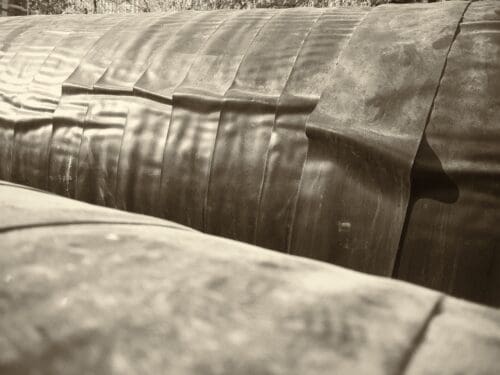Industrial coatings have to be applied according to manufacturer specifications and industry best practices. Sometimes, it happens that there’s a failure in the application process, which results in a coating defect that compromises the function of the coating. The unwelcome appearance of a coating defect means that the coating has to undergo a total replacement, resulting in unexpected downtime.
The purpose of an industrial coating is to protect surfaces and keep them free from damage. All coatings need to be applied properly, no matter if it’s a weld spatter resistant coating or coating the inside of pipes in an industrial setting. Here’s a look at the common coating defects, how to spot them, and how to avoid their appearance.
The Surface Was Improperly Prepared Before Coating
Surface preparation is crucial to ensuring the coating adheres properly to the part during the curing process. A surface that didn’t receive proper cleaning and preparation for the coating is likely to result in defects showing up later. When this happens, you’ll see visual cues that include blistering, peeling, and cracking in the coating.
Poor Environmental Conditions During the Application
Coatings need to be applied in an environment that’s recommended by the manufacturer. Environmental factors include maintaining the correct temperature and humidity levels during the application. These factors play a direct role in the ability of the coating to adhere properly and cure to the desired finish.
A major deviation in these factors can cause the coating to fail to adhere properly, even though it looks fine when it cures. In this situation, the defects show up in the same way as poor surface preparation, with cratering being an additional sign.
Poor Formulation of the Coating
Coatings need to be mixed before they’re applied to a surface. The mix requires paying attention to the ratios listed in the instructions in order to get the best result from the coating. Pouring the incorrect ratios results in a material that is applicable and curable, but ineffective. After it’s been applied and cured, the coating looks like it will deliver protection, but it won’t hold up once it’s put into use.
Signs of Coating Defects
A coating defect can show up in a number of ways, and it’s not unusual for multiple types of defects to show up in the same unit. The most common signs include:
- Peeling in strips or sheets
- Checker patterns
- Cracks
- Pitting or cratering
- Fish eyes or small holes
- Orange peel
- Pinholes
- Rust
- Uneven surface
All of these signs show that the coating was improperly applied, and the unit is susceptible to damage. If you see signs of rust, that means the coating has failed and is allowing liquid to reach the metal.
How to Avoid Coating Defects
The best way to avoid coating defects is to send the equipment out to a professional operation. Industrial coating services do the work the right way the first time, ensuring that your equipment functions properly and the protective coating does the job. A coating service has the knowledge and equipment to prepare a surface properly for an application, knows how to mix the coating ratios correctly, and does the work in the proper environment.
Replace a Defective Coating With One That’s Proven to Perform
Once a defective coating fails, there’s no hope of recovery, and it’s time for a replacement. At Sun Coating Company, we can replace the defective coating and replace it with one that meets manufacturer specs as well as your needs. We offer coatings from major manufacturers, and we also formulate custom industrial coatings. All of our products are tested and monitored for performance and longevity to ensure the best performance. Contact us today to learn more about our services and how we can help your equipment go the distance.


